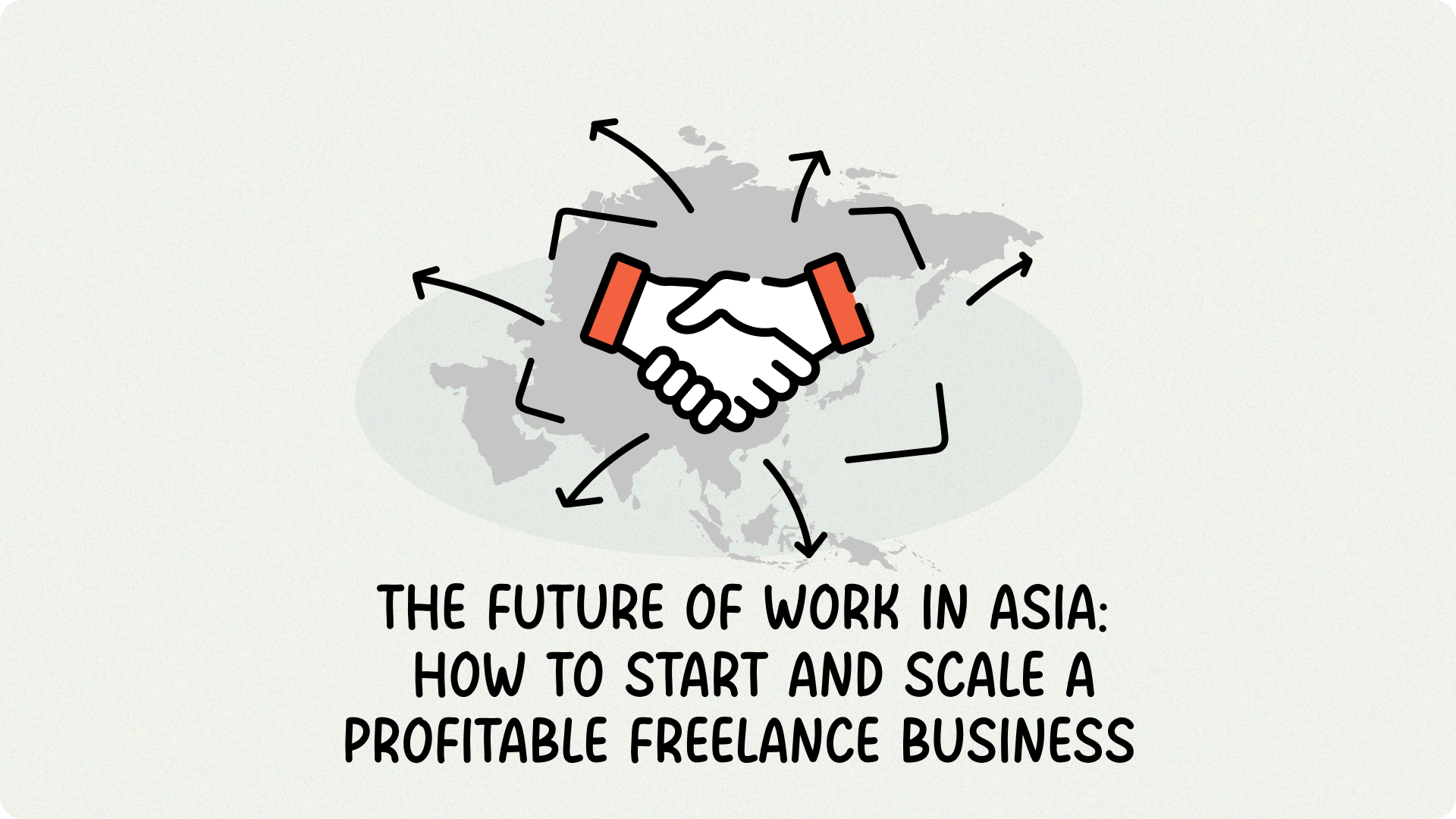The way Asia works is changing. Across the continent—from the dynamic tech hubs of Singapore and Bangalore to the booming creative industries in Manila and Jakarta—the freelance and gig economy is exploding. Millions of talented professionals are leaving traditional employment to seek more flexibility, control, and, most importantly, higher net income.
If you’re looking to transition from an employee to an entrepreneur, or if you’re already freelancing but struggling with inconsistent cash flow, you’re not alone. The secret to success isn’t just talent; it’s treating your freelance career like the lean, profitable business it is.
Here is your guide on how to launch and scale a profitable freelance business in the Asian market. Whether you’re a designer in Manila, a consultant in Kuala Lumpur, or a remote developer in Ho Chi Minh City, the fundamentals for building a profitable freelance business in Asia are the same.
Table of Contents
- Stop Trading Time for Money
- Secure Your Cash Flow Stability
- The Path to Agency-Style Scaling
- Master Your Financial Blueprint
- Capitalize on Asia’s Gig Economy Boom
- Ready to Launch a Predictable Business?
1. Stop Trading Time for Money
Many new freelancers make the mistake of competing solely on price, often charging rates that barely cover their time, let alone their operating expenses and desired profit. To scale, you must disconnect your income from the hours you work.
A. Calculate Your True Hourly Rate
Before you quote a project, determine the minimum you need to charge. This calculation moves beyond your old salary.
Target Annual Income + Annual Business Expenses (software, tax, training) = Annual Revenue Goal
Divide this goal by the number of billable hours you plan to work in a year (realistically, this is usually 1,000 to 1,500 hours, not 2,000). This provides your true hourly rate. Anything less is unprofitable.
B. Shift to Value-Based Pricing
Instead of charging per hour, charge for the value and outcome you deliver. A marketing consultant doesn’t charge for 10 hours of work; they charge for delivering a strategy that will increase the client’s sales by $10,000. That’s how you scale your income without scaling your exhaustion.
2. Secure Your Cash Flow Stability
The single greatest threat to a freelancer’s financial stability is inconsistent cash flow. A client paying 60 days late can ruin your month.
A. Demand Deposits and Milestones
Never start a project without a deposit (typically 30–50% of the total fee). For large projects, structure payment into milestones. Tie each payment to a specific, measurable deliverable. This protects you and gives the client incentive to approve work quickly.
B. Build a Cash Buffer Fund
Treat your business like a small corporation and build a cash reserve. Your goal should be to save enough to cover three to six months of all your personal and business operating expenses. This buffer allows you to ride out the slow seasons or quickly replace a client that churns, without dipping into debt.
C. Simplify Cross-Border Payments
If you serve international clients (common for Asian freelancers), don’t let exchange rates and transaction fees erode your net income. Use transparent platforms like Wise or Payoneer that offer more favorable conversion rates than traditional banks or older remittance systems.
3. The Path to Agency-Style Scaling
Scaling your freelance business means moving beyond doing all the work yourself.
| Freelancer Mindset | Business Owner Mindset |
| I have to do this myself to ensure quality. | I need to document my process so others can deliver quality. |
| My income is limited by my available hours. | My income is limited by my ability to manage good talent. |
| I sell one service: my time. | I sell packaged solutions that solve specific client problems. |
The first step is systemizing. Document your processes (onboarding, project management, delivery). Once documented, you can hire and train subcontractors or specialists to handle parts of the workload. This allows you to manage multiple clients simultaneously, dramatically increasing your total revenue potential.
4. Master Your Financial Blueprint
A successful freelancer must be a proficient financial manager. The time spent manually tracking invoices in a spreadsheet is time not spent on billable work.
Focus on Two Key Financial Metrics:
- Revenue Growth: How much money is coming in? Are your rate increases keeping pace with inflation and demand?
- Profit Margin: After paying all your contractors, software, and taxes, what percentage of revenue do you keep? A high gross profit margin is a sign of efficient operations and strong pricing power.
Budgeting is essential. You must forecast your expenses (software, professional development) and your desired income for the next quarter. Compare this to your actual performance monthly to quickly identify if you need to focus on securing more clients or cutting back on unnecessary spending. This is how freelancers shift from simply “getting gigs” to running a truly scalable freelance business in Asia.
5. Capitalize on Asia’s Gig Economy Boom
This isn’t a side trend; it’s a structural shift that is reshaping entire national economies. In major economies like China, over 200 million workers engage in gig roles, about 25% of the workforce. Across the Asia-Pacific region, the gig economy is projected to be one of the fastest-growing globally in the coming years.
Why This Matters for Your Business:
- Talent Pool: The immense volume of freelancers means you have access to specialized talent (Subcontractors) to help with scaling (Point 3) at competitive rates.
- Client Demand: Local businesses are increasingly shifting projects to freelancers, viewing them as agile, cost-effective solutions. This means a rapidly expanding client base for specialized services.
- Digital Infrastructure: The Asian market has embraced digital payments (e-wallets, cross-border services), lowering the friction for getting paid and managing finances digitally.
This momentum gives established freelancers a huge opportunity — but only for those who price correctly, systemize, and manage money well.
Ready to Launch a Predictable Business?
The future of work in Asia is independent, digital, and full of opportunity. But success doesn’t come from hustle alone; it comes from structure, planning, and clarity.
Stop juggling spreadsheets and uncertainty. Tools like Fynlo let you see your revenue, expenses, and profit side by side, so you can focus on building a resilient, scalable venture.
Ready to get started? Schedule a demo with our financial specialists to see how Fynlo can transform your freelance earnings into predictable profit.
You may also like these articles:







